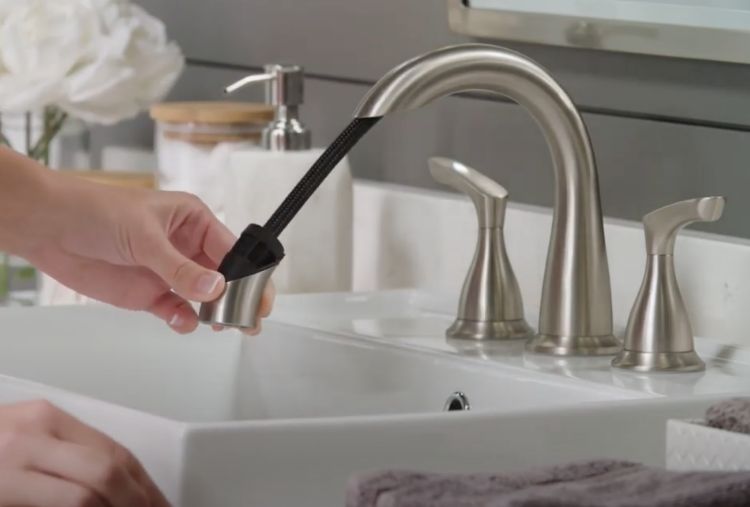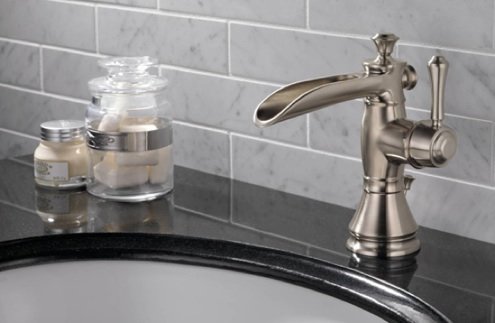Have you been looking for critical info concerning 4 Common Reasons for a Leaky Faucet?

Leaking taps might look like a minor hassle, but their impact goes beyond simply the aggravation of the noise. From wasting water to incurring unneeded monetary costs and health threats, neglecting a dripping tap can cause various repercussions. In this article, we'll look into why it's essential to resolve this common family problem immediately and efficiently.
Wastefulness of Water
Environmental Effect
Dripping faucets contribute significantly to water wastage. According to the Epa (EPA), a solitary faucet leaking at one drip per second can squander greater than 3,000 gallons of water per year. This not only strains water sources however also influences environments and wildlife depending on them.
Financial Costs
Increased Water Bills
Beyond the ecological impact, leaking faucets can blow up water expenses considerably. The built up waste gradually converts right into higher energy expenditures, which could have been avoided with timely repair services.
Prospective Residential Property Damage
Moreover, extended dripping can cause harm to fixtures and surface areas surrounding the faucet. Water buildup can trigger staining, rust, and also structural problems if left neglected, resulting in extra repair costs.
Health Worries
Mold And Mildew and Mildew Growth
The constant presence of moisture from a dripping tap develops a perfect setting for mold and mildew and mold growth. These fungis not just jeopardize indoor air quality yet likewise position wellness dangers, specifically for people with respiratory problems or allergies.
Waterborne Conditions
Stationary water in leaking faucets can become a breeding ground for bacteria and other pathogens, boosting the danger of waterborne diseases. Contaminants such as Legionella bacteria flourish in stagnant water, possibly leading to serious health problems when consumed or inhaled.
DIY vs. Specialist Repair service
Advantages and disadvantages of DIY Repair Work
While some might try to repair a trickling tap themselves, do it yourself repairs include their own set of challenges. Without correct understanding and tools, DIY efforts can intensify the issue or bring about incomplete repair work, lengthening the problem.
Advantages of Hiring an Expert Plumber
Hiring an expert plumber guarantees that the underlying source of the leaking faucet is attended to successfully. Plumbers possess the know-how and equipment to diagnose and repair faucet issues efficiently, saving time and minimizing the risk of more damages.
Step-by-Step Overview to Taking Care Of a Dripping Tap
Devices Needed
Before attempting to fix a trickling tap, gather the necessary devices, including an adjustable wrench, screwdrivers, substitute components (such as washers or cartridges), and plumber's tape.
Common Tap Issues and Their Solutions
Determine the type of tap and the particular concern triggering the drip. Usual issues consist of damaged washing machines, rusty valve seats, or faulty O-rings. Refer to maker instructions or on the internet tutorials for detailed assistance on fixings.
Preventive Measures
Routine Upkeep Tips
To prevent leaking taps, execute regular upkeep such as cleaning aerators, examining for leakages, and replacing worn-out components immediately. Furthermore, think about setting up water-saving gadgets or upgrading to more reliable fixtures.
Importance of Prompt Fixes
Dealing with dripping faucets as quickly as they're observed avoids further water wastage and possible damage, inevitably conserving both water and money in the long run.
Influence On Property Value
Perception of Well-Maintained Building
Maintaining a property in good condition, consisting of addressing maintenance problems like dripping faucets, improves its viewed worth and charm amongst potential buyers or renters.
Influence on Resale Worth
Characteristics with well-maintained plumbing fixtures, including taps, command greater resale worths in the real estate market. Dealing with dripping taps can add to a positive perception during property inspections and settlements.
Environmental Duty
Private Contribution to Preservation
Taking responsibility for taking care of trickling faucets lines up with more comprehensive initiatives toward water conservation and ecological sustainability. Every person's activities collectively make a substantial effect on protecting priceless sources.
Lasting Living Practices
By prioritizing timely fixings and embracing water-saving behaviors, people contribute to sustainable living methods that profit both present and future generations.
Final thought
Addressing a dripping faucet exceeds plain convenience; it's a necessary action towards conserving water, reducing economic costs, and protecting wellness and residential property. Whether with DIY fixings or expert assistance, doing something about it to fix trickling faucets is a little yet impactful way to promote liable stewardship of resources and add to a much healthier, much more lasting future.
How to Fix a Leaky Faucet: Step-by-Step Repair Guide
A leaky faucet may seem like a simple annoyance, but if it's not fixed promptly, that leak could cost hundreds to potentially thousands. From water damage to mold, mildew, and high water bills, even a tiny leak can be catastrophic if left unattended. Damage like this can even affect the overall value of your home, so it's important to take the right approach for leaky faucet repair. You may need the help of a plumber in some cases, but we've got a few tips you can try on how to fix a leaky faucet before calling the pros.
Four Faucet Types
When you're learning how to fix a leaky faucet, the first step is knowing what kind of faucet you're working with! There are four common types.
Cartridge Faucets
Cartridge faucets come in one- or two-handled varieties. In one-handled cartridge faucets, hot and cold water combines in a single cartridge. In the two-handled versions, hot and cold water are controlled separately and mixed in the faucet.
Ball Faucets
Ball faucets have a single lever you push up and down to adjust the pressure and rotate to change the temperature. A slotted metal ball controls the amount of water allowed into the spout.
Compression Washer Faucets
They're the oldest type of faucet, but they're still used in many homes — especially older ones. Compression faucets have two separate handles that, when turned, raise or lower the washer that seals a water valve. This valve stops water from flowing through the faucet when it is turned off.
Disc Faucets
Disc faucets rarely need to be repaired due to their maintenance-free design. The water flow is controlled by two discs — the upper one raises and lowers against a fixed lower disc, creating a watertight seal. If your disc faucet starts leaking, you may need to replace the seals or clean residue buildup from the inlets.
Fixing a Leaky Faucet
Step 1: Turn Off the Water
Whether you're learning how to fix a leaky bathtub faucet or how to fix a leaky kitchen faucet, always turn off the water supply to your working area when you're fixing a leak. The last thing you want is a flood added to your list of things to fix.
Look for the shutoff valves below your sink or around the tub and turn them clockwise to stop the water flow. If your faucet doesn't have shutoff valves, you may need to turn off the water for the whole house. Check to make sure it's off by turning the faucet on. If nothing comes out, you're ready to start the repair.
Step 2: Take Apart the Faucet
How you disassemble your faucet depends on the type of fixture you have. You can use a flathead screwdriver to remove the caps on top of the handle or handles for cartridge and compression faucets. Inside, you should see handle screws. Unscrew these with a screwdriver to remove the handle.
Disc- and ball-style faucets will typically have an inlet screw near the handle, and removing that will reveal the interior of the faucet.
Detach the Valve Stem
For cartridge- and compression-style faucets, you'll see the inner valve stem or cartridge once you remove the faucet handles. If you have a compression faucet, unscrew the brass valve stem. If you have a cartridge faucet, pull out the cartridge. If your cartridge has been in place for a while, it may require some tools or extra force to remove it due to mineral deposits.
Examine and Replace Parts
Once you've removed the parts, check them out to confirm what needs to be replaced. You may see corroded rubber washers, O-rings, stems, or cartridges. On a ball-style faucet, check the seats and springs for damage.
If you need to repair a leaky disc faucet, check the inlet and seals on the lower disc.
Once you determine what parts must be replaced, visit your local hardware store. Bring the damaged parts with you to ensure you can purchase the correct components to replace them.
Clean Valves and Faucet Cavity
If you've removed a stem or cartridge, you may notice mineral buildup in the faucet's threads. Use white vinegar to clean the valve seat by soaking it for a few minutes, then scrub it away with a soft toothbrush and rinse with warm water. You can also clean the interior of the faucet in the same way.
Reassemble the Faucet
Once your faucet is cleaned and the required parts have been replaced, it's time to reassemble it. Put the pieces back together and slowly turn the water supply back on. Doing this slowly is crucial because too much initial water pressure can damage the new hardware you've just installed.
https://homewarranty.firstam.com/blog/how-to-fix-leaky-faucet

As a serious reader about Leaky Faucets: Why They Happen & What to Do About Them, I assumed sharing that topic was beneficial. Do you know about someone else who is intrigued by the subject? Why not share it. I take joy in your readership.